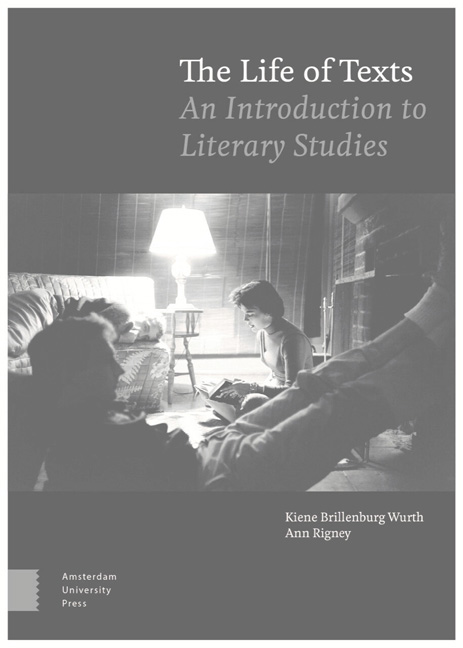4 - Intermedial Poetics
Summary
Introduction: Intermediality and the poetic
In Chapter 3 we have shown that texts can be seen as nodes in a network of other texts. In its turn, this textual network is connected to other media and art forms, such as cinema, visual art, and music. Literary texts are present in other arts and media, just as these other arts are present in literary texts. Think of cinematic adaptations (see adaptation studies*) of novels, of novelisation (novels made on the basis of films), of electronic poems using moving images, of poems evoking paintings, of paintings invoking biblical scenes, of poetry set to music. Or even more fundamentally: think of the musical potential and imaginative power of words, or of the narrative potential of images. The general term to describe this dynamic between arts and media is intermediality. As this chapter will show, intermedial relations may take on different forms. For instance, multimediality revolves around the combination of different media in a movie or an opera. Transmediality is the result of ‘transposing’ a story, idea, theme, or motif from one to the other medium, as is the case with adaptations. The concept of intermediality is also used in a narrower sense to refer to a dynamic between (inter = between) two or more media resulting in a new form that cannot (yet) be clearly determined. Intermediality in this sense is about artistic objects, events or performances that cannot yet be categorised according to established, formal criteria. Installation art by Louise Bourgeois (1911-2010) or conceptual-electronic works like Noplace (2007-2008) by the artist collaboration mw2mw are cases in point. Bourgeois’ art hovers between visual, sculptural, and performance art. Noplace invited visitors to create their own favourite version of utopia on the basis of visual, textual, and auditive material on the internet. What kind of art is this? Visual, narrative, performative, autobiographical? Noplace (its name is suggestive) is none of these, but crosses the borders between established categories and integrates different modes of expression.
This chapter addresses intermediality both in a broad and in a narrow sense, taking poetry and poetics as its points of departure. On the one hand, it shows how a number of concepts from poetic theory and rhetoric (the art, study and uses of written, spoken, and visual language as a persuasive instrument) function in intermedial contexts. Concepts traditionally reserved for the analysis and composition of poetry and speeches turn out not to be exclusively tied to literature and language.
- Type
- Chapter
- Information
- Life of TextsAn Introduction to Literary Studies, pp. 113 - 156Publisher: Amsterdam University PressPrint publication year: 2019

